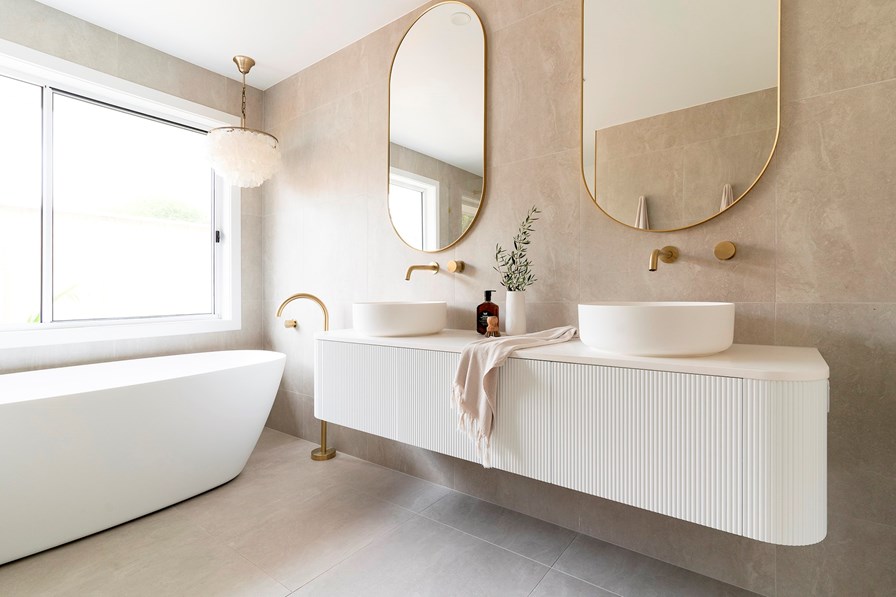Choosing the right size vanity for your bathroom is crucial for both functionality and aesthetics. A well-chosen vanity can enhance the overall look of your space while providing the necessary storage and convenience. This guide will help you navigate the selection process to find the perfect fit for your bathroom.
1. Assess Your Bathroom Space
Before diving into vanity options, measure the dimensions of your bathroom. Start by determining the length and width of the space, along with the height of the walls. Consider the layout of existing fixtures such as the toilet, shower, and bathtub, ensuring that there is enough room for movement and access to all areas.
2. Understand Vanity Sizes
Vanities come in various sizes, typically ranging from 24 inches to 60 inches and beyond. Here’s a breakdown:
- Common Sizes: Standard vanity sizes include 24″, 30″, 36″, 48″, and 60″. These dimensions cater to different bathroom layouts.
- Single vs. Double Vanities: Depending on your needs, you might choose a single vanity for smaller spaces or a double vanity for shared bathrooms.
- Height Considerations: Standard vanities are generally around 30 to 32 inches tall, while comfort-height options range from 34 to 36 inches, providing easier access for taller users.
For a wide selection of styles and sizes, check out the available options from Sydney Home Centre bathroom vanities.
3. Consider Your Needs
Reflect on your specific needs when choosing a vanity. Consider the number of users; a single vanity may suffice for a guest bathroom, while a family bathroom might benefit from a double vanity. Additionally, think about your storage needs—do you require multiple drawers, cabinets, or open shelving for toiletries and towels?
4. Proportions and Scale
Maintaining balance in your bathroom is key. Ensure that the vanity size complements the dimensions of the space. A large vanity in a small bathroom can create a cramped feel, while a small vanity in a spacious bathroom may look lost. Strive for a harmonious design that promotes a sense of openness.
5. Functionality and Accessibility
When selecting a vanity, consider how it impacts functionality. Ensure there is enough room for movement around the vanity, allowing for easy access to other bathroom fixtures. If you have specific accessibility needs, such as ADA requirements, factor those into your decision-making process. Height adjustments may also be necessary for different users, like children or adults.
6. Choosing the Right Style
The style of your vanity should align with the overall design of your bathroom. A modern, sleek vanity may suit a contemporary space, while a more ornate vanity might complement a traditional bathroom. Remember that the size can influence the style; bulkier designs may overwhelm smaller bathrooms.
7. Additional Features to Consider
Think about the features you want in your vanity. Integrated sinks can save space, while separate sinks may offer flexibility. Additionally, consider countertop space; will you need ample room for toiletries or decorative items? Evaluate storage options, including cabinets, drawers, and open shelving, to determine what will work best for your lifestyle.
8. Installation and Plumbing Considerations
Finally, consider the installation and plumbing requirements. Ensure that plumbing locations are compatible with your chosen vanity size. Wall-mounted vanities can save floor space, but freestanding options offer more storage flexibility. Decide whether you’ll hire a professional for installation or attempt a DIY approach, keeping in mind the complexity of plumbing adjustments.
Conclusion
Choosing the right size vanity for your bathroom involves careful consideration of space, style, and functionality. By assessing your needs and measuring your bathroom accurately, you can find a vanity that enhances both the aesthetics and practicality of your space. Take your time to explore the options available, and ensure that your chosen vanity is a perfect fit for your bathroom.
Keep an eye for more news & updates on BusinessFanZine!


